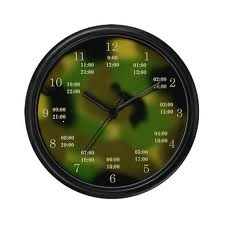
Usually we wish that there were more than 24 hours in a day, so that there are more waking hours for us to get our jobs and tasks done. Yet we see others who have as much work as we do, yet they still have plenty of time to have fun and do personal stuff like going to the beach or the mall. A good example of such people is the military. From sunup to sundown, they get things done like a well-oiled machine. They work like ants and get their tasks done like exercises, trainings and assigned chores. Tasks like cooking, paperwork, construction and even combat are done quickly and efficiently and sometimes almost simultaneously. How do they do it? The answer is time management.
Time management is not a new idea. The main concept is to prioritize the most important or most urgent tasks instead of spending a lot of time doing something that may be done later and risking non-submission of the more urgent things. But like many things, the military can do things faster and even more efficiently. In the military, time management works a little differently. In military time management, tasks are practically treated as combatants. The following are the things that need to be considered in military time management.
In military time management, most tasks that need to be carried out point toward a single objective. This objective needs to be clear and well-defined so as to put more urgency in the tasks that lead to it.
In military time management, it is also important to consider the resources that need to be used to accomplish the tasks. These resources also have to be well-defined so as to be used more efficiently.
After determining the objectives and resources, next is to determine the correct priority for all of the tasks ahead. Set which task is first, what resource to use and how much time there is to allocate.
Efficiency is the hallmark of the military. They employ a militarized version of time management based on the total effect of a certain goal or objective. An objective is separated into different aspects like criticality, accessibility, return, vulnerability, effect and recognizability or in short, CARVER.
The goal or task to be done is divided into the previously mentioned aspects and ranked from one to five or depending on the person. After ranking each concept, the ranks are summed up and the task with the highest sum gets to be done first (the CARVER time management system is the system that the Navy SEALS and Army Special Forces, have to become masters in).
For a better understanding of CARVER, let us briefly describe each aspect
- Criticality – mainly gauges the importance of a particular task. Is it that important and has to be done immediately or can it be put off tomorrow or next week? If it needs to be done sooner rather than later, then it is given a higher rank.
- Accessibility – The task may be critical but is it easy to reach? Are the resources needed to do it readily available? If the materials needed for the task has to be airlifted from some other state, then the task gets a lower rank.
- Return – What will be the return after the particular task is done? Will it be a promotion, a commendation or a pat on the head? The higher the return, the higher the rank will be.
- Vulnerability – Is the task critical and easily done with the available resources? How long can it be done? For tasks that take longer to complete, the lower the rank.
- Effect – Once the task is done, what will be the overall effect? This is slightly different than return. Will it have a bigger impact on the organization or the well-being of the individual?
- Recognizability – finally, is the task clear and concise? No task can be done quickly and effectively with incomplete information. Vague projects take a bit longer but you may have to figure them out as the military does if everything else scores high.
The system works with anything, not just military. I use it all the time for school, work and writing. It’s just a good tool to have when figuring out what task to take on.
Related Posts:
Part 2 of the CARVER system
Smaller Goals VS Larger Goals
I Will Never Accept Defeat. I Will Never Quit.
What the Military Teaches about Self-Discipline.
 It’s Spring Break this week at my school and since I’m too broke and don’t have enough time to do anything to celebrate spring break, I’ve decided to go raw vegan for the week. I’ve tried going vegan before, but never as a raw vegan.
It’s Spring Break this week at my school and since I’m too broke and don’t have enough time to do anything to celebrate spring break, I’ve decided to go raw vegan for the week. I’ve tried going vegan before, but never as a raw vegan. Yoga is a popular ancient eastern practice. Millions of people practice it regularly. It has many benefits. It improves your mental and physical health.
Yoga is a popular ancient eastern practice. Millions of people practice it regularly. It has many benefits. It improves your mental and physical health. So the Army’s been using Yoga to help Vets with PTSD; but a lot of people aren’t familiar with the practice, so I figured I’d spread the info for those who are interested.
So the Army’s been using Yoga to help Vets with PTSD; but a lot of people aren’t familiar with the practice, so I figured I’d spread the info for those who are interested.